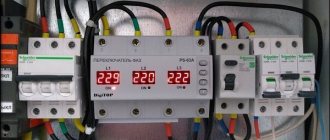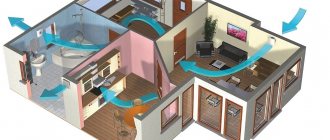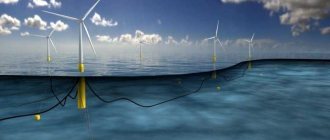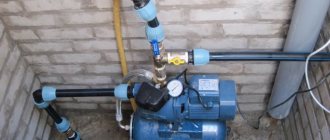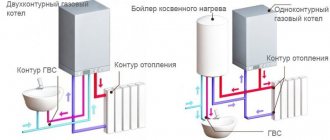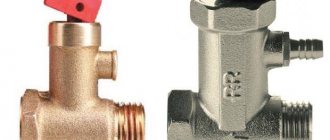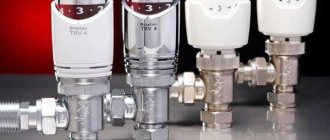The fireplace design is unique of its kind. That is why such installations have long been used as both the main and secondary heating devices in the house. By correctly choosing the height of the fireplace and its other parameters, you can significantly save various resources, reduce the amount of gas and electricity consumed through the use of solid fuel heating equipment. In this article you can find a diagram of fireplaces, get acquainted with their main components, features, characteristics, and also learn how to design fireplaces.
Main characteristics
The installation of a fireplace first of all implies a more detailed, detailed acquaintance with its parameters and features. Fireplace designs must contain the following information:
| Key Features | Description |
Wall-mounted miniature stove equipped with a hob for one burner | LocationThe design of the fireplace may differ in the way it is located in the space of the room. The most common are island, wall, and corner installations. However, built-in and hanging-type products are no less popular. The portal itself (frame) of the stove is made only from environmentally friendly, heat-resistant materials (brick, natural stone, tempered glass). |
Closed hearths are more efficient, allowing for efficiency of up to 80-90 percent | Fire hole typeThe design of the fireplace is also divided according to the type of combustion opening. The hearth can be either closed or open. Closed fireplaces have a higher efficiency, reaching 90 percent, while open fireplaces are not able to fully heat the room (efficiency no more than 60 percent). The principle of operation of the fireplace is standard air heating (cold air vapor enters the combustion opening, heats up and, when released, is evenly distributed throughout all rooms in the house). |
Important: Before you find out what a fireplace is made of, it is important to know that it can emit thermal energy in a certain amount. This is primarily influenced by the number of parties. Also, in addition to standard solid fuel installations that operate using logs, you can give preference to simpler electric or gas variations.
In order to make a fireplace with your own hands, make the diagram yourself, if you have skills and experience in this field. However, it is best at this stage to seek help from a professional stove maker who will be able to make correct drawings, fully taking into account all the individual features of the building, as well as your personal wishes and preferences.
Two main elements of any solid fuel design
Arrangement diagram or how a Russian brick fireplace works
Without knowing how to make a fireplace with your own hands, a drawing or detailed order will help you fine-tune the process, and gradually lay out each row to successfully complete the work. Do not forget to choose the right parameters such as structure height, width, power. The performance of the device is calculated in such a way that the amount of generated thermal energy is sufficient to heat the entire house or a certain area of it.
Interesting to know: one of the newest stoves is one that runs on biofuels. Bioethanol belongs to the category of safe and environmentally friendly substances; when burned, it does not emit harmful or hazardous substances or decomposition products into the air. The scheme and method of designing such devices is quite simple - this is due to the absence of the need for a chimney.
Location of the fireplace structure
When developing a fireplace drawing, it is important to choose the location of the structure wisely. The construction of such a system requires significant financial costs. To ensure that your efforts are not in vain, this issue should be given increased attention.
What layout of the fireplace can be considered the most common? Today in a country house the structure is built into the wall or close to the wall. No less common are options for installing a corner type fireplace. In order to save space, in small houses fireplaces are built that serve as an interior partition or are built into it. Less commonly used is free-standing equipment or, as it is often called, island type (central).
The construction of stoves and fireplaces must be carried out in compliance with safety regulations.
For built-in and corner types of structures, there must be at least a meter of free space around the perimeter. Professionals consider the most successful placement of equipment to be close to the surface of the main wall of the room.
What to pay attention to
In order to make a stove with your own hands, you will need to familiarize yourself with the following basic points:
- For brick, massive units, there is a need to build an additional foundation. It is necessary to give the fireplace stability and greater reliability;
- Be sure to draw up a diagram that will display all the characteristic features of the chimney system;
- An order or drawing will help you determine as accurately as possible how much materials you will need for assembly;
- Select the type of cladding, style (it must be combined and harmonize with the interior of the living room, kitchen, bedroom or any other room chosen for installation);
- The design must comply with all fire safety standards and requirements.
A detailed description of all the main and minor components of a solid fuel stove
Division of installations according to the method of heating and distribution of thermal energy
Advice: if you decide to do the assembly yourself, start designing, preparing drawings, diagrams, we recommend preparing the necessary tools in advance. To work, you will need a trowel, a pick, a jointer, a plumb level, a square, and a container in which you will mix the mortar.
Fireplace
Fireplace is a ready-made solution, which is divided into two types:
A fireplace is a type of classic English fireplace whose base is a portal, formed from a marmur and laid out from a igniter. In the old days, such classic stones were known in ancient castles and castles. Given the rich history, in our time, stench is used for aesthetic purposes, because they provide very little heat, as only those who are near the fireplace can perceive.
Their characteristic features:
- low rhubarb KKD
- good panorama of the open half,
- There is no possibility of heat distribution in other areas.
Closed fireplace - consists of a fireplace insert and portal, decorative finishing (kahel, marmur, stone and others). In this type of fireplace, the main importance is played by the strength and tightness of the fireplace insert - it is stored in it, as much heat is removed as a result. When firewood is spat at the fireplace, circulation begins in the fireplace - a thick circle of hot and cold winds. A very hot fireplace heater heats up in the room and rises uphill under the floor of the room, and when cooled down it falls down onto the base. The very name of the fireplace stones is that they are scorched by hot winds, which allows the area around the fireplace to heat up quickly, but at the same time there is a great temperature fluctuation between the floor and the fireplace.
Characteristics of a closed fireplace:
- high rhubarb CCD more than 75%;
- good panorama of fire through the sealed glass doors;
- Possibility of heat distribution up to 5 rooms, one or two on top of heating;
- the possibility of removing accumulated masses and heat-insulating materials to continue the release of accumulated heat.
The picture shows the fireplace insert Jotul I 18 Harmony
Basic elements and components
The main components of solid fuel heating equipment include the following elements (brick appliances):
- Combustion chamber. Due to this element, the heating device functions and heats the premises. Logs, coal, pellets are loaded into the combustion chamber;
- Chimney system. Designed for high-quality removal of combustion products generated as a result of operation, which should not enter the room. Chimneys can be of the coaxial type, assembled from elements of stainless steel, brick, ceramics;
- The category of auxiliary type components includes a heating element, which in gas and electric appliances is responsible for heating the structure and generating thermal energy;
- The smoke collector is responsible for collecting the produced combustion and decay products;
- Grate. This element is intended to place logs or coal on it, after which, when burned, the air heats up and enters the combustion chamber;
- The ash compartment greatly simplifies the maintenance of the heating device. It is into this compartment that all waste products, as well as ash and soot, go. This box can be easily pulled out and cleaned after finishing the fire. In addition, fresh air is constantly supplied to the ash pan;
- The internal contents of the heating unit are represented by a lining made of refractory materials;
- The rear inner wall of the furnace is equipped with a tooth. It is intended to protect the room from generated smoke and combustion products. The width of the device is equal to the cross-section of the chimney itself;
- You can regulate the level and intensity of the flame in the hearth using a special damper or otherwise a valve.
The photo shows the direction of flows of cold and heated air masses
Standard wood-burning fireplace with closed hearth
It is interesting to know: the power and quality of heating by a stove also largely depends on the design features of the device.
The most effective are fireplaces with several sides, radiation points. In particular, these include devices with two-way and three-way radiation. You can learn more about the design features of fireplaces by viewing this slide show:
Calculation part before installation
It is necessary to begin the construction of a brick fireplace by carrying out calculations. The equipment should perform not only a decorative, but also a practical function: maintain a comfortable microclimate in the room. It is necessary to prepare a drawing of the fireplace, focusing on the dimensions of the room.
It is not practical to install a large structure in a small room. During the combustion process, it will consume too much oxygen.
If there is a supply ventilation system, this will cause strong drafts. The second problem will arise in the excessive release of thermal energy. When the fireplace is working, it will be uncomfortable to be in the room.
In the process of engineering calculations, it is necessary to focus on determining the following parameters:
- design dimensions;
- its height;
- chimney sections.
Features of the structure of cast iron fireplaces
Cast iron stoves have a lot of undeniable advantages, which include high efficiency, maximum efficiency, durability, reliability, easy installation, use and installation. The most modern, expensive models are distinguished by a variety of functionality. For example, they perform not only a heating function, but are also equipped with a water circuit, have a built-in oven and a multi-burner hob. In addition, such devices have their own distinctive design features, which you can familiarize yourself with below:
- To transfer heated air masses and distribute them throughout the premises of the house, an element such as a radiator is intended;
- The frame of the structure is represented by a portal, which is made of refractory cast iron, steel or ceramics;
- The base of one or more doors must be cast iron. In order for you to enjoy the view of the flame burning in the hearth, this part is additionally equipped with tempered transparent glass;
- The main and irreplaceable element in this case is the chimney system. Without it, it is simply impossible to properly and safely use this wood-burning installation. After all, all combustion products must be completely removed to the street!
The gas fireplace has a simpler structure and can be installed even in an apartment
biofireplaces belong to the category of safe and environmentally friendly, due to the fuel used - bioethanol
Cast iron stoves are considered one of the most efficient; they have enough power to become the main and only source of heating in a private home or country house. If the house has several floors or many rooms, as an alternative, you can install several of these heating devices or connect one to the house's water supply.
The simplest structures are fireplaces that run on biofuel. They consist of a firebox, a nozzle, and decor (cladding) on the outside. Unlike solid fuel structures, biofireplaces, as well as gas and electric models, can be installed in apartments.
Our works
Barbecue Complex Turgenevskie Dachas
Price on request
The brick barbecue complex includes: a tabletop, a grill, a cauldron. The complex is made of Don Zori (Steppe Patterned) brick according to an individual sketch. At the client's request, an electric spit for 15 kg was built in.
BBQ Complex Red Path
Price on request
A brick barbecue includes: a countertop, a sink, a cauldron, a grill, and a bread oven. The complex is made of hand-molded bricks Don Zori (Demidovsky) according to an individual sketch. At the client's request, an electric spit for 15 kg was built in.
Step-by-step construction of a fireplace
Price on request
Combines all the delights of a fireplace and stove at the same time. Like any good stove, it retains heat and releases it for a whole day. At the same time, it can be used as a closed one, but you can also open the large doors to admire the live fire.
Fireplace under cladding Maklakovo
Price on request
Made of Don Zori brick. Additionally, at the request of the client, it was painted in various shades. The project was made according to an individual sketch.
Furnaces
With the word “pich”, in our understanding, the great importance of the design is due to the purpose. Yes, that’s right. Such ovens have a special functional capacity - they are created according to the principle of channels, in addition to which they heat up and burn the area in which they are located, it is possible to obtain these channels to ensure Games in the living rooms or the whole cabin. In accumulating furnaces, flue gases are created at the fireplace, which, when scorched by hot air (fireplace fireplaces), collapse through the channels and thereby ensure the transfer of heat from the half .
Current manufacturers of stone deposits are promoting a modernized version of the “furnace” - these are standing steel or chavun structures that contain a combustion chamber, which is covered with dry insulating materials, such as Primary fireboxes can be upgraded with different materials from the building. They can have a variety of shapes and configurations, from classic to high-tech.
Characterized by the following signs:
- looming high rhubarb KKD
- They play out the differences in the size of the area, and other places are directly related to each other.
- The number of days it is possible to distribute heat in rooms
- ease of installation, directly connected to the flue
- These combustion chambers provide the ability to remove accumulated masses under the body of metal furnaces, which will continue to produce heat for up to 12 years after the combustion process is completed.
Therefore, if you want to completely burn the surfaces and place a lot of surfaces, you better return the heavy stone insert (fireplace cassette) and create heat and water distribution of heat in the rooms, and if you want to Play one room of any area from 15 to 200 m2, If you just want to take a look at the fire panorama, we invite you to take a look at the different options for standing stoves.
Let's take a look at the deck of our existing stone fireboxes and stoves: Jotul, Hoxter, Austroflamm, Rocal.
Open or Alpine (Swiss)
This type of fireplace has become popular only recently. In fact, this is also not a fireplace in its pure form, but for a different reason. Rather, it is simply an open or semi-closed hearth, over which a cap is made that turns into a chimney.
An Alpine or Swiss fireplace has a memorable appearance
It fits perfectly into chalet-style interiors, because that’s where it came to us. The device, in general, is simple, but not very efficient in terms of heating. But it is very decorative.
The option that you see in the photo above is made in a rustic style - made of natural processed stone. Such work costs a lot of money: you have to adjust and trim hard rocks, which requires a high level of skill.
Modern style
The shape and placement of the fireplace depends on the designer's concept. In a combined living and dining room, a structure in a false partition will help with zoning. Transparent wall options add a fantastic touch to the room.
A modern fireplace in the interior can visually improve the room. In a narrow living room, a transverse glass wall with a false fireplace at the base marks the boundary between functional areas. A divided room does not lose its original integrity.
Recreation area Source pinterest.es
Modern styles love fireplaces in spaces. A small model in a spiral staircase becomes a continuation of the interior. The panoramic solution under glass is installed in a column. The option with a fire island looks great on the floor.
Interior in dark colors Source sakhexpo.ru
The hearth is a mandatory attribute of the loft style. The combination of rough wall decoration and a large classic portal makes the interior more homely. A semi-partition with a burning fire will close the staircase to the second tier or kitchen from prying eyes. A floor or hanging firebox will be a harmonious continuation of the industrial direction.
Fireplace in a modern interior Source tzaki-giannoudis.gr
Ethnic style
National design trends in home decoration have recognizable features. Fireplaces in ethnic-style living rooms add a special mood to the interior. The original design of the Japanese hearth is not similar to other structures. The low model with thin wooden beams gives the room a soft, warm light. Unobtrusive natural shades do not irritate, so they set the mood for relaxation.
National design trends in housing design Source mkumodels.com
The interior of the living room with a fireplace in Indian style is decorated in bright colors. Three-dimensional tiles with floral patterns are used as materials for decorating the hearth. The portal is covered with ocher or decorative plaster. If the room is large, then there is room in it for a solution with columns, plaster paintings and frescoes.
Living room in ethno-style Source www.michaelhowellsstudio.com
It is difficult to imagine Scandinavian style without a fireplace in the living room. A compact fireplace in one of the corners will naturally fit into a bright room. The cylindrical firebox with a long pipe is almost invisible next to the stairs. A laconic black portal with a woodpile niche will become a visible detail in the interior.

